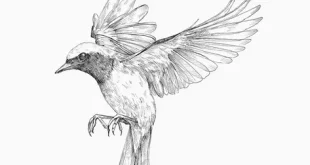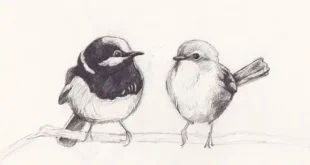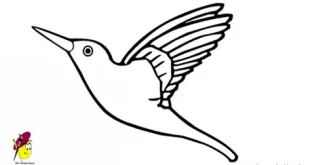Osprey: The Regal Sovereign of Sky and Water
Osprey Birds global presence, unparalleled hunting mastery, and captivating beauty, the Osprey reigns as one of the most majestic raptors on Earth. Gliding effortlessly between sky and water, it embodies the symphony of power, precision, and grace in the natural world.
In this article, we delve into the Osprey Birds exquisite physical features, ecological niche, sophisticated hunting prowess, breeding rituals, and its triumphant conservation saga.
1. Magnificent Appearance and Remarkable Adaptations
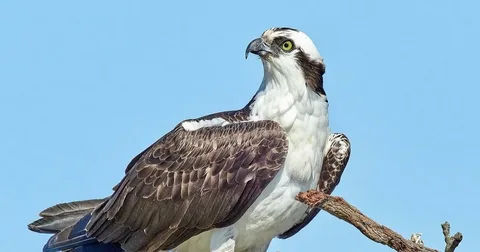
The Osprey Birds is a spectacular bird of prey, boasting an imposing wingspan of 5 to 6 feet and a slender, aerodynamic body designed for efficiency and dominance. Every feature of this avian predator reflects evolutionary ingenuity:
- Elegant Plumage – Its lustrous chocolate-brown upperparts contrast exquisitely with its snow-white breast and underparts, creating a regal visual signature.
- Iconic Facial Mask – A bold, jet-black eye stripe sweeps across its head, enhancing its piercing stare and lending it an aura of stealth.
- Exceptional Vision – With razor-sharp eyesight, Ospreys can discern fish beneath rippling waters from breathtaking altitudes.
- Ingenious Talons – Equipped with reversible outer toes and spiny foot pads, the Osprey achieves an ironclad grip on its slippery aquatic quarry.
- Hooked Beak – Its razor-curved beak is a precision tool, sculpted by nature for tearing through flesh with minimal effort.
This suite of adaptations makes the Osprey a specialized apex hunter, perfected for an aquatic lifestyle.
2. Global Habitat and Spectacular Range Osprey Birds
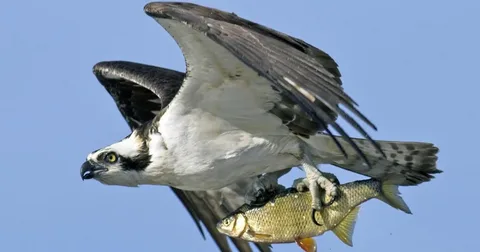
Unlike most raptors, the Osprey enjoys a near-global distribution, thriving on every continent except Antarctica. Its habitat preference is simple yet essential: proximity to abundant freshwater or coastal fisheries.
Preferred Environments
- Pristine lakes
- Serpentine rivers
- Saltwater marshes
- Expansive estuaries
- Artificial reservoirs
Epic Migrations
Some individuals undertake intercontinental journeys exceeding 5,000 miles, a testament to their endurance and navigational brilliance.
This extraordinary mobility underscores the Osprey’s resilience and its remarkable ability to colonize diverse ecosystems around the globe.
3. Hunting Mastery: A Dance of Precision and Power
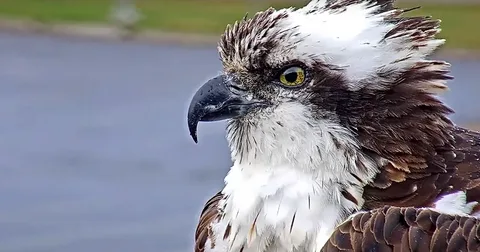
Renowned as the ultimate piscivore, the Osprey’s diet comprises nearly 99% fish, making it one of nature’s most specialized predators. Its hunting technique is an extraordinary ballet of aerodynamics, timing, and raw power.
The Art of the Hunt
- Aerial Scouting – With raptor-sharp vision, the Osprey soars silently above shimmering waters, scanning for unsuspecting prey.
- Plunging Descent – Upon locking onto a target, it dives with breathtaking velocity, folding its wings and striking the surface talons-first.
- Submerged Seizure – Unlike most raptors, Ospreys frequently immerse themselves entirely, relying on hydrodynamic precision to secure their quarry.
- Streamlined Retreat – In flight, they instinctively align fish head-first within their talons, optimizing aerodynamics and conserving energy.
Favored Prey
- Salmon
- Trout
- Bass
- Perch
- Mullet
Witnessing an Osprey’s hunt is a spectacle of controlled ferocity, showcasing a perfectly evolved predator at the peak of its craft.
4. Breeding Rituals and Parental Devotion Osprey Birds
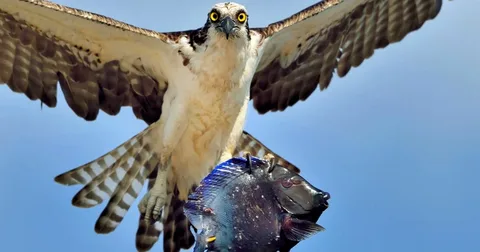
Osprey Birds exhibit remarkable fidelity, both to their mates and their nesting grounds. These monogamous pairs often reunite annually, performing graceful aerial displays to reaffirm their bond.
Architects of the Sky
- Their nests, or eyries, are towering fortresses constructed from sticks, seaweed, moss, and other materials.
- Over successive years, these structures can expand to massive proportions, becoming iconic landmarks in their habitats.
Raising the Next Generation
- Clutches typically contain 2 to 4 eggs.
- Hatchlings emerge covered in delicate down and remain under vigilant parental care until fledging at 7 to 8 weeks.
The Osprey’s dedication to its young reflects an intricate balance of cooperation and instinct, ensuring the survival of its lineage.
5. Osprey Birds Conservation Triumph and Ecological Significance
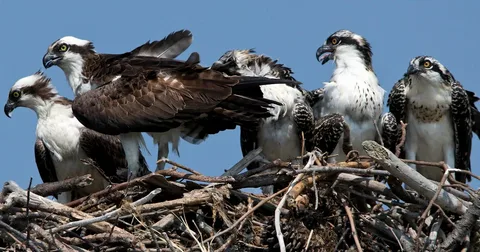
Once on the brink of collapse due to pesticide contamination, particularly from DDT during the 20th century, Osprey populations faced a catastrophic decline.
Conservation Milestones
- Ban on Harmful Pesticides – The elimination of DDT restored reproductive viability.
- Protected Wetlands – The preservation of aquatic habitats revitalized fish populations and secured Osprey hunting grounds.
Today, the Osprey is classified as a species of Least Concern by the IUCN, symbolizing how human intervention, when responsible, can heal ecological wounds.
Ecological Role
As a keystone predator, the Osprey regulates fish populations, ensuring the stability and health of aquatic ecosystems. Their presence also acts as a bioindicator, reflecting the vitality of freshwater and coastal habitats.
Conclusion
The Osprey is a living testament to resilience, adaptability, and evolutionary brilliance. Perfectly engineered for life between sky and sea, it embodies precision in hunting, devotion in breeding, and grace in flight. Its triumphant recovery from near-extinction highlights the profound impact of conservation efforts and our shared responsibility to protect nature’s wonders.
To witness an Osprey soaring effortlessly across a blue horizon or plunging into a glassy lake is to behold the harmony between predator and environment—a poetic interplay of strength, beauty, and survival.
—
 Birds Drawing Birds Drawing
Birds Drawing Birds Drawing

